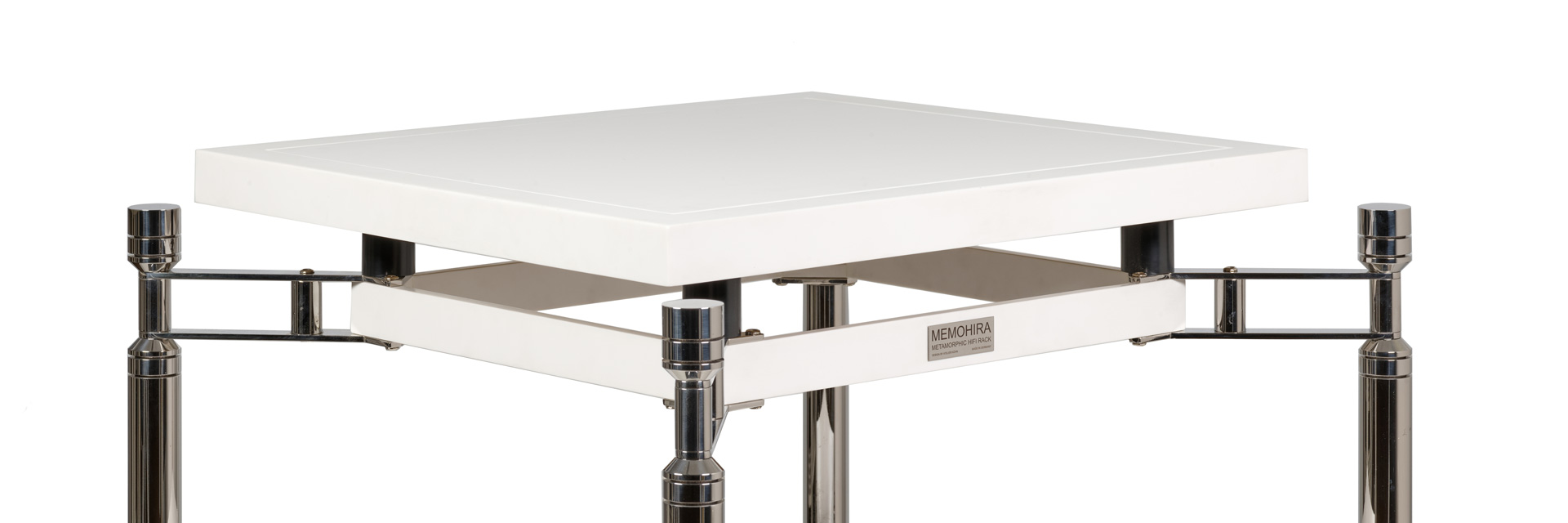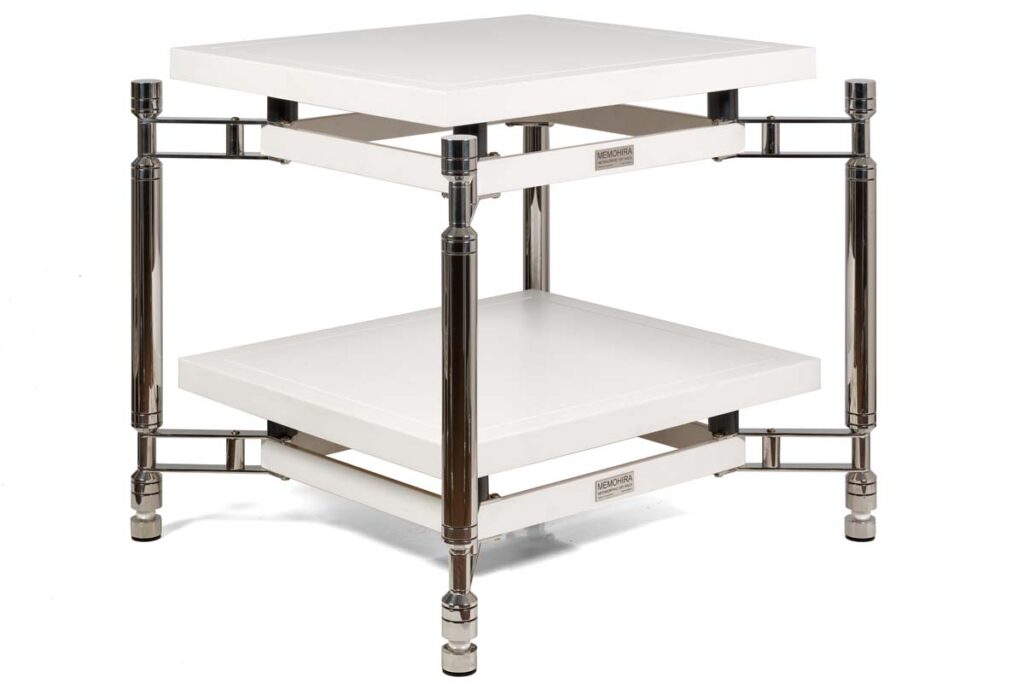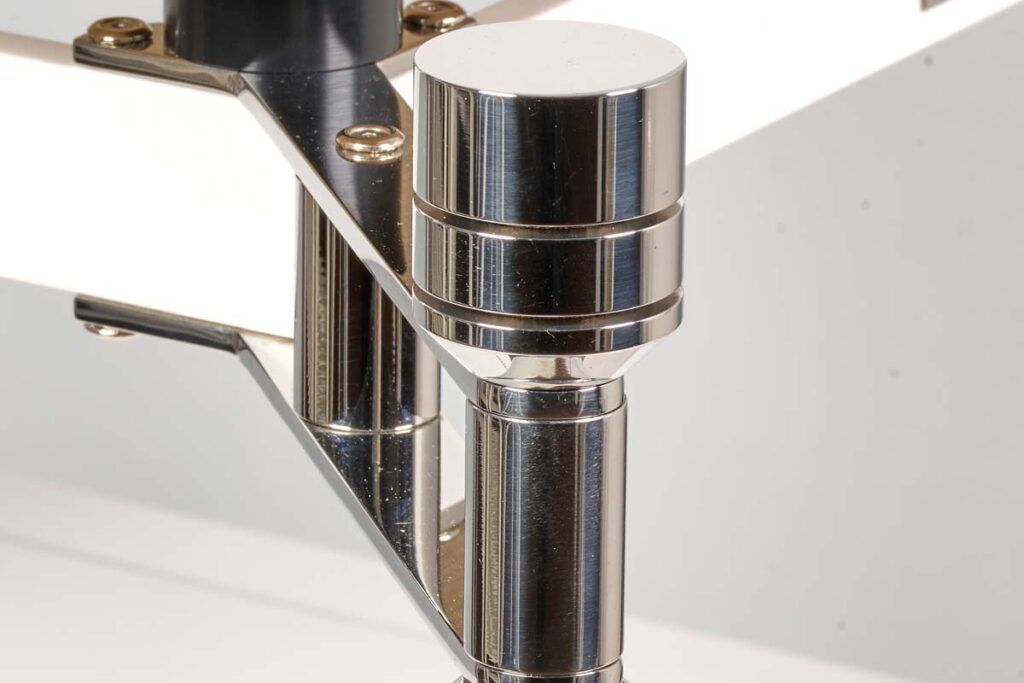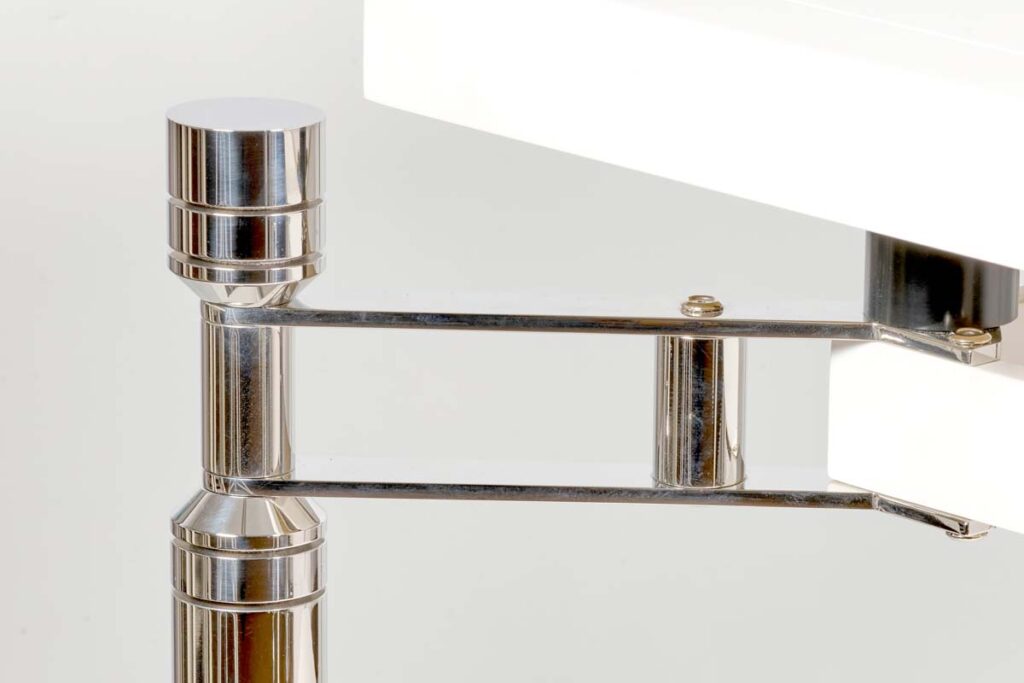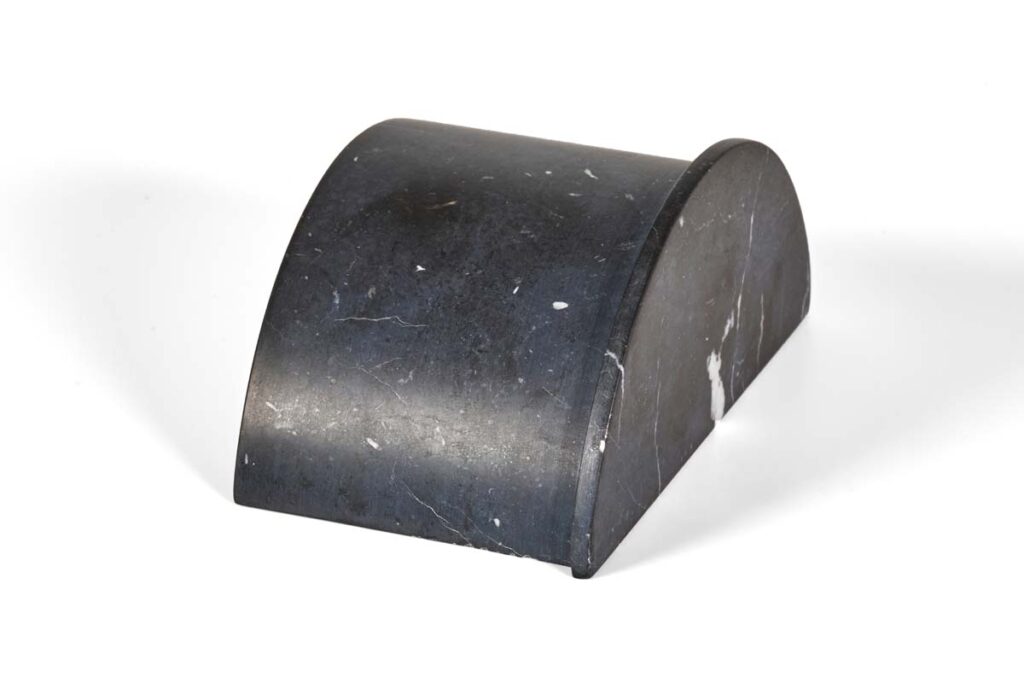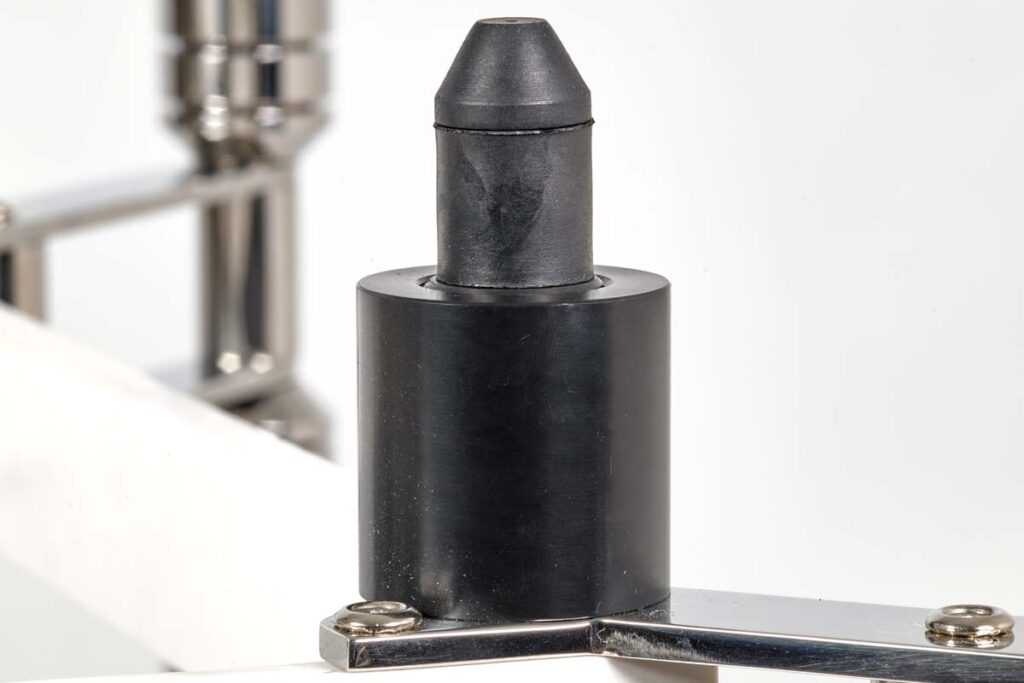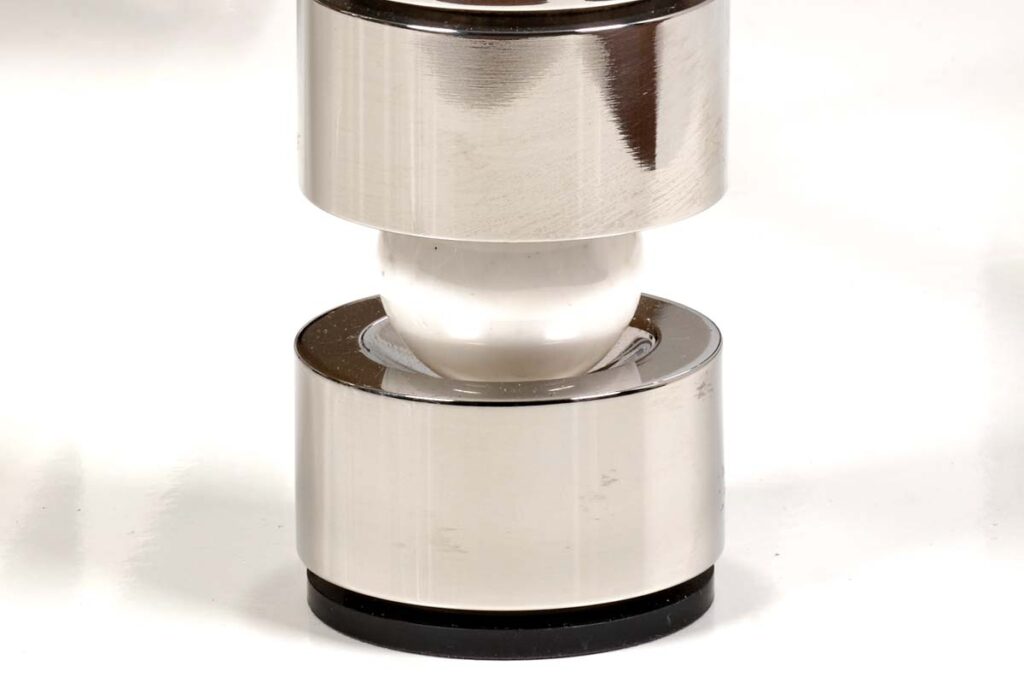Mentioning hi-fi and lifestyle in the same sentence is typically about discreetly integrating all the components. Architect Philipp Kühn takes a different approach: his “Metamorphic HiFi Rack” – MeMoHiRa for short – is a high-tech silver platter that demonstratively displays the system. In what style? You decide.
There’s something special about getting new hi-fi toys in for review all the time. However, it gets particularly exciting when a product arrives in our listening room that doesn’t actually exist yet – from a manufacturer that isn’t actually isn’t a manufacturer yet, either: We recently received a call from Philipp Kühn, architect by trade. As a self-confessed audiophile, he regularly finds himself at the interface between his profession and his passion for audio – after all, quite a few of his customers are also hi-fi enthusiasts, so he’s often tasked with making sure their setups play to the gallery of their living environment. And this is precisely where the architect sees a gap in the market: There is no shortage of choice in the rack market. However, in his opinion, the available products are not flexible enough to offer exactly the right answer to every conceivable interior style.
His pitch made us curious enough to invite the rack along with its creator to visit us, and a few days later he came to set up the prototype in our listening room so we could admire it. We had Kühn assemble it because the sound furniture consists of several hundred individual parts due to its high degree of modularity. At one or two junctions, you need to know what you’re doing. All in all, however, the assembly is pleasingly quick; after perhaps twenty minutes, the MeMoHiRa is ready to play. And it makes a good impression even when standing still: the sheer number of components is anything but obvious – all the more striking is the excellent surface quality. The rather open design is also very appealing: This is clearly not a piece of stealth furniture designed to discreetly hide the precious electronics – on the contrary, it looks more like a pedestal that is an eye-catcher even when empty and showcases the components placed on it ostentatiously and stylishly.
A rack for all occasions
What you need to know about Philipp Kühn in terms of the number of components is that it was partly his childhood passion for Lego that ultimately steered him onto his current career path. The man is used to all the parts in a system fitting together perfectly and therefore has little sympathy for elements that only fit into their surroundings to a certain extent. Today, however, both his technical understanding and his possibilities are at a completely different level compared to his Lego days. About a year and a half ago, he therefore decided to develop a hi-fi rack himself that would not only meet the highest technical, sonic and visual standards, but above all offer unrivalled configurability and customizability. It should not only match the respective system, but also present itself to the observer as an integral part of the decor as well as the component fleet and thus ensure an interior concept as if from a single source.
Want an example? In our test sample, the base construction made of polished stainless steel with white shelves; however, depending on the customer’s setup, the metal parts can also be ordered powder-coated or brushed, bronzed or painted in any RAL color. The component shelves, made of a special solid surface material as standard, can also be ordered in natural stone or with a wood veneer – if the system really needs to fit seamlessly into the living space, the shelves can even be veneered with the same parquet that is laid on the floor.
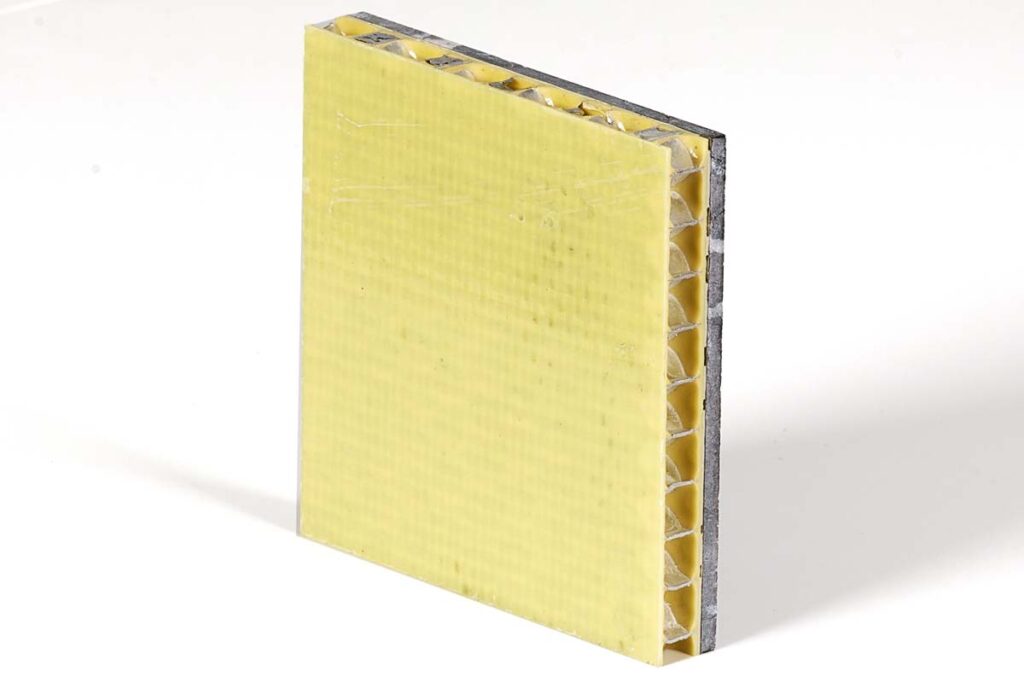
The MeMoHiRa is just as adaptable in terms of configuration: thanks to the highly modular design, not only the clearance between the levels but also the dimensions of the shelves can be determined relatively freely. The outriggers that connect the legs to the support frames can also be mirrored, enabling a side-by-side arrangement of the levels. Another advantage of this flexibility that should not be underestimated is that the rack can be redesigned with relatively little effort by replacing a few elements to adapt to any changes in the hi-fi setup or decor.
Wherever you look, you can find nice little details that clearly show how much thought Kühn has put into his creation, such as cable guides, that hook into the rack frame and hold the cables in position using plastic strings, or an optional headphone hanger, which is also attached directly to the rack. Any worries that the highly complex structure might be unable to bear the weight of massive high-end machines are completely unfounded: The recommended maximum load is an impressive 155 kilograms per level – and this specification is still conservative: “we stopped testing at 340 kilos,” Kühn tells us. We can use the following as a rule of thumb: As long as you don’t need a crane to heave a component onto the rack, it should be fine.
The foundation: hard facts
Just as much brainpower went into the acoustic design, although Kühn did not carry out the development work entirely on his own. Instead, he turned to the Fraunhofer Institute, particularly when it came to measuring the performance. MeMoHiRa is ultimately the result of a series of measurement runs in which Kühn tested various approaches, discarded some, optimized others, until he finally arrived at a concept that met his requirements. Concepts based on tuned mass damping, for example, fell through: Not only does the mass of the components have to correspond quite precisely to the tuning mass if they are to be effective; their center of gravity also has to be exactly in the middle of the device so that each corner does not require its own tuning. Coupling via spikes has also been ruled out because these transmit vibrations equally in both directions.
The MeMoHiRa therefore relies on high mass, isolation and damping: in our configuration with two levels, it already weighs 60 kilograms, whereby the materials used offer a high degree of internal damping. The level shelves consist of an aluminum honeycomb core and are optionally clad with a solid surface material or natural stone. As a nice detail, perforated panel absorbers with 130,000 needle-fine holes each are attached to the underside to reduce reflections between the levels. They are decoupled from the main frame by neoprene mats, while the levels themselves are connected by graphite disks. Finally, the coupling to the floor is achieved via ceramic spheres, which dissipate vibrations from the rack but do not transmit impact sound, especially in the vertical direction. The result is high, even damping down to the low frequencies, which are difficult to control due to the high vibration energy.
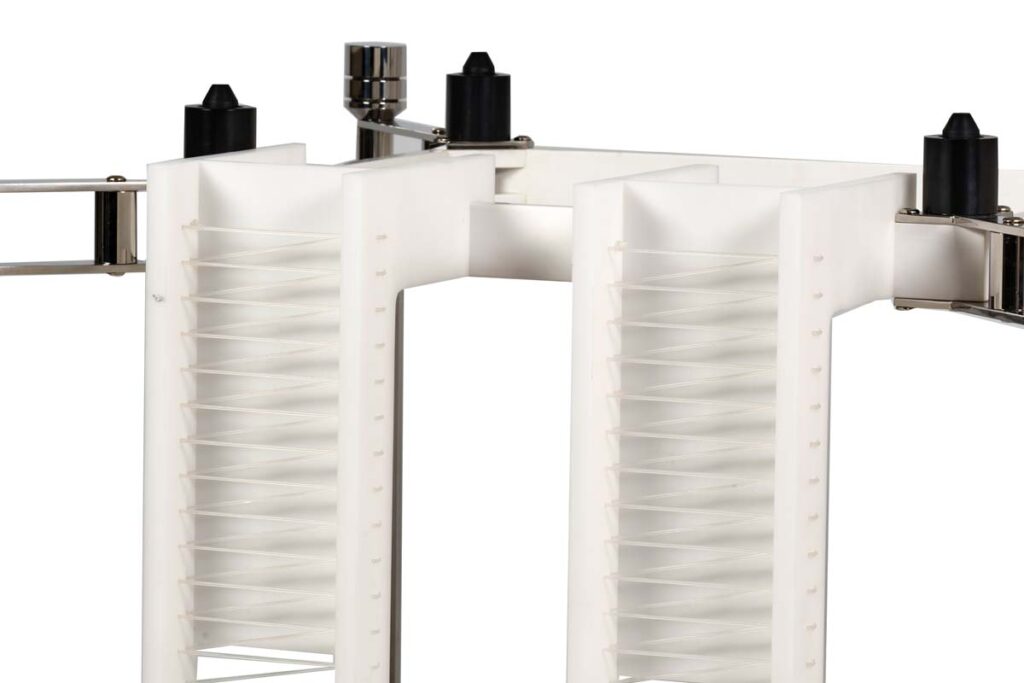
This leaves the question of price, which cannot be seriously answered at this stage. “As it stands here, the rack costs a good 15,000 euros,” Philipp Kühn calculates. However, this is partly due to the fact that all components are custom-made – the unit costs are therefore in no way comparable to those of small series production. Where exactly MeMoHiRa will end up in terms of price is therefore still in the air; however, it is clear that we are talking about a high-end product here, which is of course also reflected in the complexity of the construction as well as in the material quality.
Heard through the tube
But enough of the dry theory – let’s give the thing a listen. As a test subject, I deliberately use the Line Magnetic LM-88IA, an integrated tube amplifier in combination with the Audio Note CD 3.1x, which is also equipped with tubes – if anything goes out of kilter due to uncontrolled vibrations, these electronics are going to relay it mercilessly. “Cocoa” by Rei from her album Orb goes into the tray – a clean and tightly produced track with a tight beat, in which the individual sound events are clearly separated, but which can come across a little bright and exhausting on an overly clinical setup. During the introductory riff, the closely positioned microphone shows the listener the guitarist’s fingers as if under a magnifying glass. The guitar appears pinned in place smack dab in the middle of the stage, and as soon as the beat kicks in, it comes with a lightning-fast attack as well as with due pressure. In Camille Saint-Saëns’ Third Symphony in C minor, everything remains perfectly ordered at all times despite the large orchestral bass power with bowed basses and the organ in the leading role – yet no bass energy is lost here.
In a cross-comparison with two sparring partners from our listening room, it quickly becomes clear that the MeMoHiRa confidently steps up to the best horses in our stable at eyes’ height. Its greatest strength is its balance. In one instance, it has to admit defeat to a high-end competitor in terms of treble finesse, but then it counters with an equally clearly defined but more powerful bass. Compared to another competitor, it has a slimmer sound, but offers that decisive bit more clarity, especially with large orchestral works. In every respect, it delivers a performance at the highest level and confidently holds its own among the best – and it looks damn good doing it.
Accompanying Equipment
CD player: Ayon CD-3sx, Audio Note CD 3.1x, Accuphase DP-570 | Network player/DAC: Lumin X1, Soulnote D-3, Aavik S-580 | Turntable: AVM Rotation R5. 3 MK2 | Integrated amplifier: Aavik I-580, Line Magnetic LM-88IA | Preamplifier: Accuphase C-2300, Phasemation CM-2200 | Power amplifier: Burmester 216, Accuphase P-7500 | Speakers: Wilson Audio Sasha DAW, Audio GE Teddy, GoldenEar T66 | Rack: Solidsteel, Finite Elemente, Creaktiv | Cables: AudioQuest, HMS, in-akustik
Rack MeMoHiRa – Metamorphic HiFi Rack
Concept: highly customizable high-end hi-fi rack | Construction: modular design with support frame made of stainless steel and solid surface material, composite shelves with damping decoupling | Versions: wide selection of surface materials and finishes for both the shelves and the support frame, freely selectable number of shelves horizontally and vertically | Usable area (W x D): 54 x 49 cm; other dimensions available on request | Maximum recommended load capacity per level: 155 kg | Special features: easy reconfiguration by replacing individual elements, optional add-ons (cable routing, headphone hanger) | Dimensions (W/H/D): 72/62/66 cm | Warranty period: n/a, still in prototype stage. A., as still in the prototype stage | Price: around €16,400 (prototype cost as tested)
Atelier Kühn
Philipp Kühn
Widenmayerstraße 18
80538 Munich
Phone +49 89 32895149

